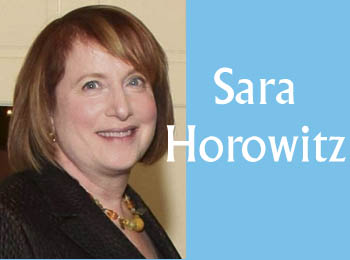His gravestone, like his life, evokes the complexities of the Jewish experience in America. Born a few years before the Great Depression to parents who had come to the United States from Poland, former New York City mayor Ed Koch’s life exemplified the roller coaster ride of an immigrant family pursuing the American dream. He rose from the poverty of the Depression era to political power and stature. His family integrated into American culture, but maintained a strong identification with their Jewish heritage. A decorated infantryman during World War II, Koch was deeply affected by the Holocaust. He remained in Germany after the war to assist in the denazification process.
One of only three New York mayors to serve three terms, Koch is credited with reinvigorating the city, bringing it out of bankruptcy. Not without controversy, he came down hard on crime and grime. In the days after his death, as reflections and reminiscences filled the media, certain words were repeatedly used to describe him: outspoken, combative, canny, opinionated, blunt, brash and prickly. In a videotaped interview with the New York Times conducted five years ago and released after his death, he was more succinct: “I’m just this little Jewish kid from the Bronx!”
Asked in the interview about his legacy, he responded: “I want to be remembered as a proud Jew who loved the people of the city of New York and did his best to make their lives better.” His burial site exemplifies the complicated relationship among those commitments. He elected to be buried in Trinity Cemetery rather than in a Jewish cemetery, and for the most New York of reasons: location. Trinity is in the heart of Manhattan. Almost as a counterbalance, inscribed as an epitaph on his tombstone are the last words of murdered journalist Daniel Pearl, “My father is Jewish, my mother is Jewish, I am Jewish.” Below that appears the assertion that Koch was “fiercely proud of his Jewish faith,” “fiercely defended” New York City, and that he “loved his country.”
Koch was not the first Jewish mayor of New York. He succeeded Abe Beame, another child of Polish immigrants. But as I thought about Koch’s individualized and complex negotiations of identity and values, I was reminded of yet another mayor who exemplified a different set of circumstances in the Jewish experience.
Like Koch, Fiorello LaGuardia served for three terms, from 1934 to 1945. LaGuardia’s parents, too, immigranted to the United States, in his case from Italy in the late 1800s. Like Koch, LaGuardia was from the Bronx, and both graduated from the same law school (although decades apart). Although LaGuardia’s mother was a Jew from Trieste – a descendant of the prestigious Luzzatto family of scholars, rabbis, and poets – Fiorello and his sister, Gemma, were raised as Episcopalians. The family made frequent visits to Trieste, an important centre of Jewish life for centuries. Around the turn of the century, the family moved back to Italy, although Fiorello returned to New York.
As mayor of New York, LaGuardia was among the earliest outspoken critics of Hitler and National Socialism. As early as 1934, he warned against the threat that the Nazis posed to Jews. His sister, Gemma, who had remained in Italy, married a Hungarian Jewish man, and they eventually moved to Budapest. The Gestapo arrested Gemma and her husband soon after the German invasion of Hungary and transported them to Mauthausen. Because of her brother’s position, Gemma was seen as a potentially valuable political hostage. Gemma was transferred to the women’s camp, Ravensbrück. Although, like her brother, Gemma didn’t think of herself as Jewish, she wore the yellow star on her clothing.
After the war, Gemma was reunited with her daughter and young grandson who, it turned out, had also been in Ravensbrück. Eventually, she learned that her husband had not survived Mauthausen. I first learned of Gemma LaGuardia Gluck’s story when I visited Ravensbrück in the mid-1990s. Her memoir, originally published in 1961, was reissued in 2007, edited by Rochelle Saidel, who has researched the Jewish prisoners of Ravensbrück
LaGuardia and Koch make an interesting pairing: one not Jewish but swept into Jewish history by virtue of family and conscience, the other, flamboyantly Jewish, embracing Jewish history in his own eclectic way.
